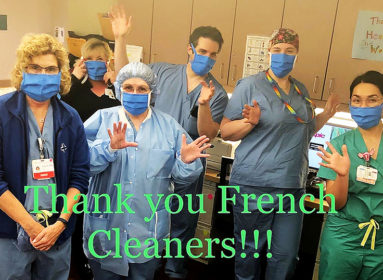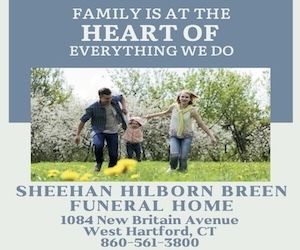
By Vera Schwarcz
I had not planned on going to the dedication of a new Beit Midrash in the city of Ariel. I was busy with my grandchildren visiting Israel for the first time. What pulled me toward the hills of Shomron, in the end, was bloody terror. After the horrific murders of Hallel Yaffa Ariel and Rabbi Michael Mark, I had to change my plans.
I knew that Rabbi Mark’s seriously wounded widow was the granddaughter of Rabbi Charles Batt, the man whose name was inscribed upon the walls of the new center for Torah outreach. I had to go to honor the memory of this distinguished Torah educator from Hartford and also to witness firsthand how building places for Jewish learning brings enduring light into a world marred by the darkness of baseless hatred.
Our car filled with graduates of Rabbi Batt’s Yeshiva of Hartford (now the Bess and Paul Sigel Hebrew Academy in Bloomfield) left Yerushalaim (Jerusalem) in the fullness of afternoon light. We traveled through the hairpin turns on the country road to Ariel (there is another, more trafficked highway), and arrived just in time for the rush hour. Though we were slowed to a crawl, it was inspiring to see the thriving new industries being developed in this area that is home to over 20,000 Israelis and new immigrants from the U.S., the former Soviet Union, Europe, Ethiopia and even India.
Our destination was a modest synagogue called Abir Yaakov. In a city of largely secular Jews, this is a small yet growing enclave of observant Sephardim and Russian olim. It was precisely in this humble setting, that the Young Israel of Hartford is now making a uniquely impactful contribution.
The vision of a new Beit Midrash grew out of a conscious indebtedness to Rabbi Batt’s contribution to Jewish life in Connecticut and beyond. Rabbi Batt and his devoted wife, Minnie, became involved in the early days of the Yeshiva of Hartford. He subsequently became the school’s president for 19 years while also serving as the inspiring volunteer rabbi of the Young Israel of Hartford for more than two and a half decades. In the last few years, as the membership of this venerable congregation dwindled greatly, remaining members sought an institution in Israel where funds could be donated to honor the memory of Rabbi Batt by continuing the worthy work to which he dedicated his life. At the same time, the Young Israel of Hartford gained recognition in Israel in a way that echoes the beautiful davening and Torah learning that has been its hallmark for the past 79 years. Rabbi Batt’s daughter, Miriam Halpern, became an ally in this project and proceeded to oversee all the complex details of building a new center for Torah learning in memory of her parents.
As we got out of the car in a dusty corner of Ariel, the simple black lettering on Jerusalem stone stood out with striking dignity: “Mishkan Yehoshua Mordechai. Be’chol Darchecha Daehu” — “In all your ways, you shall know/acknowledge Him” (Proverbs 3:6). These words, I learn, were consciously chosen by Miriam Halpern to echo her father’s life long commitment to loving and accepting every single Jew and inspiring hundreds to realize the fullness of their spiritual potential. The quotation from Proverbs also appears underlined in a letter from the Lubavitcher Rebbe to Rabbi Batt. As many Jews of all walks of life, Rabbi Batt consulted with the Rebbe about the educational initiatives that he was pioneering in Hartford in the 1950s and 1960s. The Rebbe’s blessings to Rabbi Batt at Pesach time included wishes for the vigorous fulfillment of all his undertakings in the spirit of “knowing God in all your ways.”
Inside the Beit Midrash, the plaque commemorating Rabbi Charles Batt and his wife Minnie is entitled “Torat Chaim” — the living Torah. It tells in eloquent Hebrew and simple English the story of a modest and visionary couple who dedicated their efforts to nurturing Jewish souls. A businessman, Rabbi Batt launched several path-breaking educational initiatives, all along insisting that he be called simply “Mr. Batt.” Distinguished rabbis who had been his students gathered for this evening in Ariel to remember the acts of kindness that earned this Hartford educator the well-deserved title of “Av ruchanit le meot” — “the spiritual father of hundreds.” In keeping with Rabbi Batt’s commitment to Jewish learning, the plaque inside the Beit Midrash acknowledging the contribution of the Young Israel of Hartford is modest yet visible.
Neither the new building nor the books gifted by veteran members of the Hartford synagogue are simply ceremonial objects. What was amply apparent in all the speeches at the dedication in Ariel is that this Beit Midrash is a growing center for Torah learning and for Jewish unity that is changing the meaning of daily life in the hills of Shomron. Even before Rabbi Batt’s grandson, Aryeh Batt, affixed the mezuzah to the door, classes for the elderly, women and children had been taking places every single day. The young rabbi of Abir Yaakov congregation described the scene in the evening when Ariel residents congregate here after a day of hard work — all different ages, all different levels of observance, in small groups pouring over ancient texts that come alive through shared probing. The rabbi of the community of Netzarim expelled from Gush Katif (now living in Ariel) called the din of nightly learning in this Beit Midrash a concrete reminder of the meaning behind “Shema Israel Hashem Elokeinu Hashem Echad” — Hear o Israel, the Lord is God, the Lord is one. Here, Jews of all stripes unite with each other, gather in the fullness of their spiritual and physical prowess to strengthen themselves for the great challenge of building up the land of Israel with “kedusha” – the holiness of our distinctive calling as Jews.
An evening that began with a tearful prayer for the recovery of Rabbi Charles and Minnie Batt’s granddaughter, Chava Rachel Bat Ayelet Hashachar, ended with song and celebration. Deadly terror does not have the last word in the hills of Shomron. It is the legacy of Torah learning that is literally enlivening this landscape in which Rabbi Batt’s physical and spiritual descendants continue to love and care for every Jew.
I witnessed this legacy myself as our car pulled out of the gravely lot next to the Beit Midrash. A resident of Ariel flagged us down because he saw that one of the backlights was out. He turned out to be a mechanic for Avis and in the late evening hour he changed the bulb so that we may travel safely back to Jerusalem. The Batt tradition of chesed – unasked for kindness – was literally illuminating our journey in Israel, as it had all those decades in the formative period of Jewish community building in Hartford after the Shoah.
Vera Schwarcz is emerita professor of History and East Asian Studies, Wesleyan University. Now retired, she splits her time between her homes in West Hartford and Israel.








 Southern New England Jewish Ledger
Southern New England Jewish Ledger









